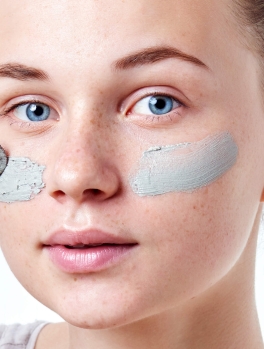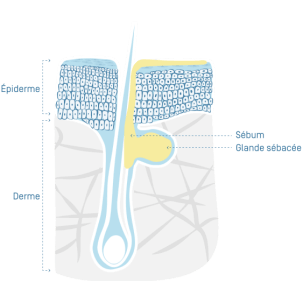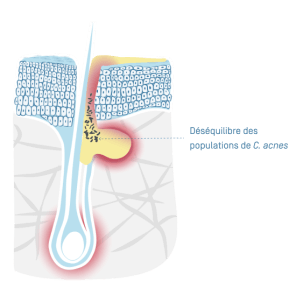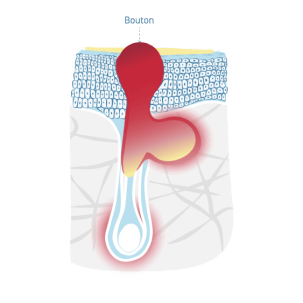What do you need to know about acne?

Acne is a skin condition that appears at puberty when hormones are running amok. It is very common, affecting 8 out of every 10 teenagers, both girls and boys. Acne is characterized by onset of blackheads, whiteheads and/or red spots, even cysts, on the face and sometimes on the chest and back. Its main complication is the risk of scarring, which can be permanent. It is difficult to hide and can also cause embarrassment and self-esteem issues for some people. Simple, practical, easy to implement advice can help you live better with acne.
5 simple daily rituals
Apply
your prescribed treatment as regularly as possible
Why?
- For better and faster results
Treating acne takes time (6 months or more), so the more closely you adhere to treatment and hygiene rules, the faster you’ll see results, and you’ll lower the risk of scarring
- To prevent acne from becoming more severe
How?
- Integrate the ingestion and application of prescription products into a skin care routine to make it more pleasant
- Set a reminder so you won’t forget
Do not touch
or pick at acne spots
Why?
To reduce the risk of irreversible scarring
Touching lesions can make them worse and delay treatment efficacyHow?
- Keep your hands and mind busy when you feel the urge to touch a spot
- Hold an ice cube on a painful red spot for a few moments to soothe it rather than touching it
Do not neglect
skin hygiene
Why?
- To reduce excess sebum involved in the formation of spots
- To apply treatments on clean, dry skin
How?
Use gentle cleansing products formulated especially for acne-prone skin to avoid inflaming already irritated skin
Do not go out
in the sun without protection
Why?
To avoid making your acne and acne scars worse
Sunshine is a fake friend in case of acne. While it’s true that skin seem to clear up in the sun, afterwards there is a rebound effect with even more spots and a greater risk of marks and scarring.How?
- Apply a sunscreen with a label indicating a protection factor (SPF) of at least 30 systematically before going out in the sun
- Choose a product formulated for acne-prone skin
Talk about it
if you are finding your acne hard to live with
Why?
To avoid suffering as a result of your acne and closing yourself off
Whether you have 2 spots or 25, acne can have a negative effect on self-esteem and self-image.How?
Solutions exist for each type of acne, so don’t hesitate to ask for advice from family, doctors, friends, on social networks, or any other person you trust

What makes acne worse?
- A diet rich in fat and sugars
- Stress
- Post-sun exposure
- Comedogenic make-up
- Picking at spots
- High-protein supplements (whey protein)
- Excessive exfoliation
- Inappropriate contraceptive pills
Associated products
Doctor's stamp
Want to read on?
This access is reserved for professionals, registered on Pierre Fabre For Med.
To access the full content, please register or log in if you already have an account.


